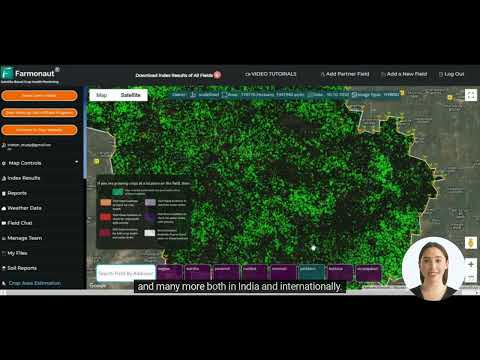OPEC+ Navigates Global Oil Demand Recovery: Balancing Production Cuts and Market Stability in Post-Pandemic Era
“OPEC+ controls approximately 50% of global oil production, influencing market stability through strategic output decisions.”
In the ever-evolving landscape of the global energy sector, we find ourselves at a critical juncture as OPEC+ approaches a pivotal meeting to discuss its output strategy. The delicate balance between oil supply and demand continues to shape market stability, with potential production increases hinging on vaccine rollouts and economic recovery. As we navigate through these uncertain times, it’s crucial to understand the complex factors influencing global oil demand recovery, OPEC’s cautious approach, and future predictions for the oil market.
The Current State of Global Oil Demand
The global oil production outlook and crude oil price trends remain uncertain as the energy sector grapples with the ongoing impact of the pandemic. While fuel demand shows signs of recovery in certain markets, resurgent COVID-19 outbreaks in Europe and elsewhere reinforce producers’ wary stance.
In recent months, we’ve observed strong signs of recovery in U.S. fuel demand. However, the renewed COVID-19 threats in various parts of the world have reinforced the producers’ cautious stance. This dichotomy between recovering and struggling markets has created a complex scenario for OPEC+ to navigate.

OPEC+’s Cautious Approach
As OPEC and its allies approach another critical meeting on April 1 regarding oil output, the coalition, primarily led by Saudi Arabia, believes its cautious strategy is yielding positive results. Energy Minister Prince Abdulaziz bin Salman has emphasized that he remains concerned about demand recovery, stating he will believe in a rebound only once evidenced.
This cautious approach has been met with criticism, particularly as crude prices soared to $70 per barrel. However, in light of current global conditions, this decision appears wise. The virus’s resurgence has impacted demand, and Iran’s increasing exports in defiance of U.S. sanctions have slowed down crude purchases in several regions.
The Delicate Balance of Production Cuts
OPEC+ will consider a gradual revival of part of the 1.2 million barrels per day it had committed to releasing this year. Additionally, they will reassess an additional 1 million barrel-a-day cut that Saudi Arabia has been implementing. Despite discussions, there are uncertainties about firm resumption dates or an extension of current cuts, as oil prices still lag behind levels necessary for many member states to fulfill budgetary needs.
If any production increases are decided upon, it’s anticipated they will primarily come from Russia and Kazakhstan, which have received special permission in prior meetings to boost output slightly. As Russia’s fiscal needs differ from those of Saudi Arabia, it is likely that the country will be allowed to increase production with continued cooperation from Riyadh.
Global Factors Influencing Oil Demand Recovery
Several factors are influencing the global oil demand recovery. Let’s explore these in detail:
- Vaccine Rollouts: The progress of COVID-19 vaccine distribution worldwide is a crucial factor in determining the pace of economic recovery and, consequently, oil demand.
- Economic Recovery: As economies return to normal, we expect enhanced consumption, potentially leading to a reduction in oil stockpiles accumulated during the pandemic.
- Geopolitical Tensions: The dynamics of U.S.-Iran relations and potential sanctions on Iranian oil could disrupt the market balance.
- Legislation: The prospects of legislation from the U.S. Senate penalizing OPEC for “price fixing” could introduce additional pressures for the coalition to act.
- Regional Variations: While demand is rising in the U.S. and China, resurgent outbreaks in Europe and elsewhere complicate the global picture.
“Global oil demand is projected to recover to pre-pandemic levels of about 100 million barrels per day by 2022.”
Comparative Analysis of Global Oil Demand Recovery Factors
| Factor | Current Status | Impact on Oil Demand | Future Outlook |
|---|---|---|---|
| Vaccine Rollouts | Progressing globally, uneven distribution | +2-3% | Positive, accelerating demand recovery |
| Economic Recovery | Varied across regions, overall improving | +3-5% | Gradual improvement expected |
| OPEC+ Production Cuts | Ongoing, under review | -1-2% | Likely to ease as demand stabilizes |
| Geopolitical Tensions | U.S.-Iran relations uncertain | -0.5-1% | Potential for market disruption |
| Regional Demand Variations | Strong in U.S. and China, weak in Europe | +/-1-2% | Gradual global convergence expected |
The Role of Technology in Oil Market Analysis
In navigating these complex market dynamics, advanced technologies play a crucial role in providing accurate data and insights. While our focus is on the oil industry, it’s worth noting that similar technological advancements are revolutionizing other sectors as well.
For instance, in the agricultural sector, companies like Farmonaut are leveraging satellite technology and AI to provide valuable insights for farm management. While not directly related to oil production, such technologies demonstrate the broader trend of data-driven decision-making across industries.
Future Predictions for the Oil Market
As we look ahead, several key predictions emerge for the oil market:
- Gradual Demand Recovery: We expect global oil demand to recover to pre-pandemic levels by 2022, driven by economic recovery and vaccine rollouts.
- Production Increases: As demand rises, OPEC+ is likely to gradually increase production, with initial increases coming from Russia and Kazakhstan.
- Price Stability: Oil prices are expected to stabilize as supply and demand balance out, though volatility may persist due to geopolitical factors.
- Regional Variations: Recovery is likely to remain uneven, with stronger demand in the U.S. and China potentially offset by slower recovery in Europe and other regions.
- Technological Advancements: The industry will continue to leverage advanced technologies for better market analysis and decision-making.

Implications for the Global Economy
The recovery of the oil market has significant implications for the global economy. As a key commodity, oil prices impact various sectors, from transportation to manufacturing. A stable oil market can contribute to overall economic stability and growth.
However, the transition to renewable energy sources is also influencing long-term oil demand projections. Countries and companies are increasingly investing in green technologies, which could reshape the energy landscape in the coming decades.
The Role of Data in Decision Making
In the complex world of oil production and market analysis, data plays a crucial role. Advanced technologies are being used to gather and analyze vast amounts of information, helping industry leaders make informed decisions.
While our focus is on the oil industry, it’s worth noting that data-driven decision-making is becoming increasingly important across various sectors. For example, in agriculture, companies like Farmonaut are using satellite data and AI to provide valuable insights for farm management. You can explore their services through their  or their mobile apps:
or their mobile apps: 

For developers interested in integrating such data into their own systems, Farmonaut also offers an API with comprehensive documentation.
Conclusion
As we navigate the post-pandemic era, the global oil market faces a complex set of challenges and opportunities. OPEC+’s cautious approach to production cuts, balanced against growing demand in some regions, will continue to shape market dynamics in the coming months and years.
While uncertainties persist, particularly regarding the ongoing impact of the pandemic and geopolitical tensions, there’s cautious optimism about the gradual recovery of oil demand. The industry’s ability to adapt to changing circumstances, leverage advanced technologies, and make data-driven decisions will be crucial in ensuring market stability and supporting global economic recovery.
As we move forward, it’s clear that the energy sector will continue to evolve, influenced by factors ranging from technological advancements to environmental concerns. Staying informed and adaptable will be key for all stakeholders in this vital industry.
FAQ Section
- Q: What is OPEC+?
A: OPEC+ is an alliance of oil-producing countries that includes members of the Organization of the Petroleum Exporting Countries (OPEC) and several non-OPEC countries, including Russia. - Q: How does OPEC+ influence oil prices?
A: OPEC+ influences oil prices by adjusting their collective oil production levels. By increasing or decreasing supply, they can impact global oil prices. - Q: What factors are currently affecting global oil demand?
A: Key factors include the progress of COVID-19 vaccine rollouts, economic recovery rates in different regions, geopolitical tensions, and the transition towards renewable energy sources. - Q: When is oil demand expected to return to pre-pandemic levels?
A: Many analysts predict that global oil demand could return to pre-pandemic levels by 2022, though this depends on various factors including the pace of economic recovery and the control of the pandemic. - Q: How are technological advancements impacting the oil industry?
A: Technology is playing an increasingly important role in the oil industry, from improving extraction techniques to providing more accurate market analysis and forecasting tools.
Earn With Farmonaut: Affiliate Program
Earn 20% recurring commission with Farmonaut’s affiliate program by sharing your promo code and helping farmers save 10%. Onboard 10 Elite farmers monthly to earn a minimum of $148,000 annually—start now and grow your income!
Farmonaut Subscriptions




